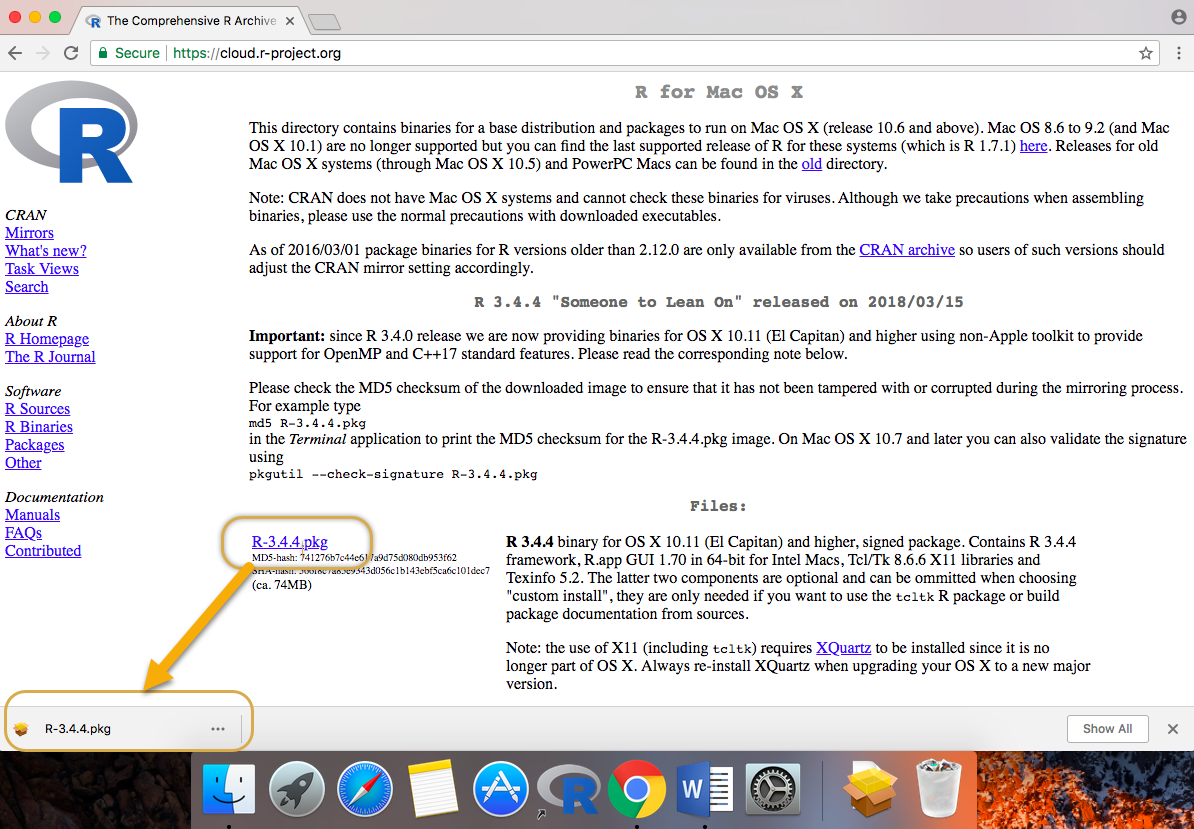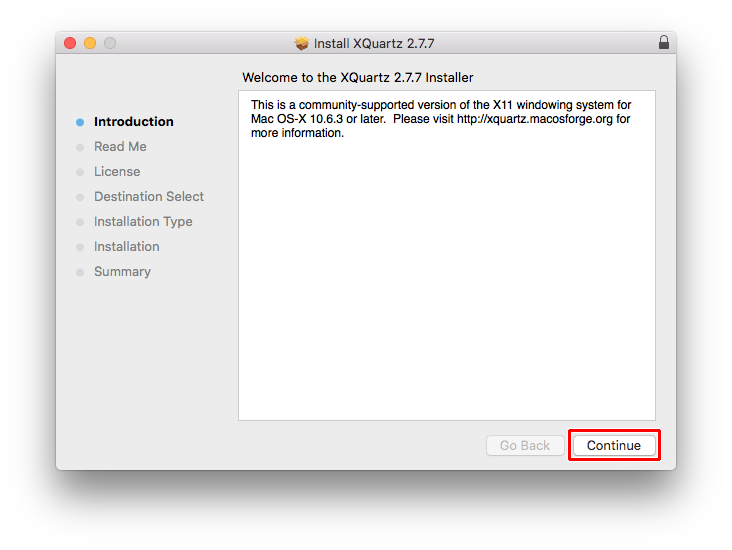

It is in these settings where ODK Briefcase comes in handy. Compiling data from ODK Collect on the various mobile devices you are using for data collection will therefore not be possible through online connection with an ODK Aggregate server or other ODK-compatible servers such as Formhub, Surve圜TO, ONA or Kobo Toolbox.
#YOU NEED TO INSTALL XQUARTZ 2.7.7 OR HIGHER FIRST. CODE#
It’s common in the java world to use IDEs to automatically generate this kind of boilerplate, but subtle bugs can creep in over time as the once generated code isn’t manually updated to reflect subsequent changes in the data model.1 Access to internet may not always be available in the different settings in which you will conduct your data collection campaign.

Yet for a useful value type in java one will generally need to write: constructors, accessors, a comparison function, a hash implementation, serialisation logic etc. Defining a record of a few fields should really only take a corresponding few lines of code. However, it’s a burden to do in languages like java that lack support for sum types.Įven for regular product types (ie records of fields) java can be tedious. Using ADTs to more accurately model data is a excellent step in this direction. When designing systems, I place great value in applying the "make illegal states unrepresentable" principle 1. Java lacks support for algebraic data types ( ADTs), and requires large amounts of boilerplate to define even simple types. As a long time haskell developer, however, I find java’s facilities for data types frustrating indeed. I find modern java acceptable as a language for getting things done.

Posted in Uncategorized | Leave a reply Algebraic Data Types in JavaĪt Helix we often code backend services in java. The complete code for this demonstration, include build and dependency configuration can be found in its github repo. It’s really only a starting point – the ADL system’s value increases dramatically when used to ensure consist types between systems written in multiple languages. Hopefully this post has given a simple but useful demonstration of ADL usage from haskell. In the above example config, if you leave out the last line and fail to set the SSL key, the error is: Unable to parse a value of type config.ServerConfig from demo-server-example3.yaml:Įxpected field certificateKey at protocol.https The parser provides helpful error messages. See the serialisation documentation for details. One point of note is that ADL unions (like Protocol in the example) are serialized as single element objects. The ADL json/yaml serialization schema is straightforward. The simplest configuration yaml specifies just the port, relying on the ADL defaults for other fields: port: 8080Īn example that overrides the protocol, and hence must provide additional information: port: 8443

Jumping right in, we can specify the config schema in a file adl/config.adl: module config -> putStrLn ("Starting https server on port " ++ (show (sc_port sc))) We’ll assume that our project is some sort of server which will load a yaml configuration at startup. To follow along with this project, you’ll need the ADL compiler installed and on your shell PATH. As a small stand alone example, this post shows how ADL can be used to specify the syntax of a yaml configuration file, and automate its parsing into haskell. We use it in most of our projects, as a strongly typed schema language for specifying:Īnd then as the base for code generation in haskell, java, rust, c++ and typescript.īut, because ADL has a variety of uses, the path to getting started can be unclear. The ADL system has proven valuable at Helix.


 0 kommentar(er)
0 kommentar(er)
